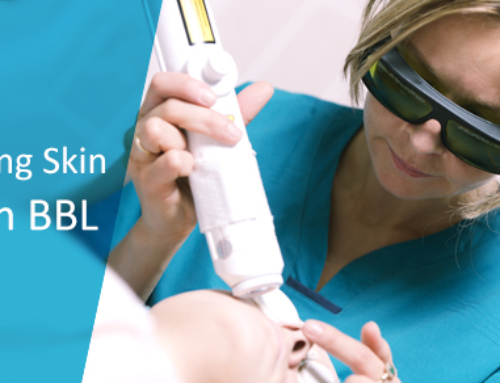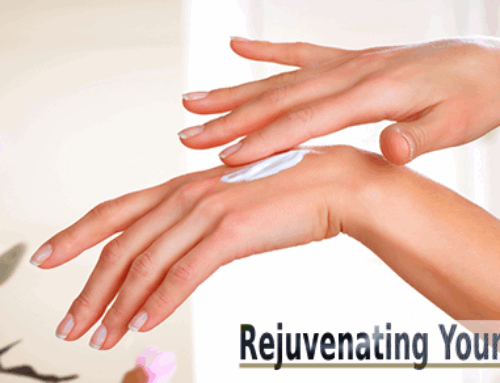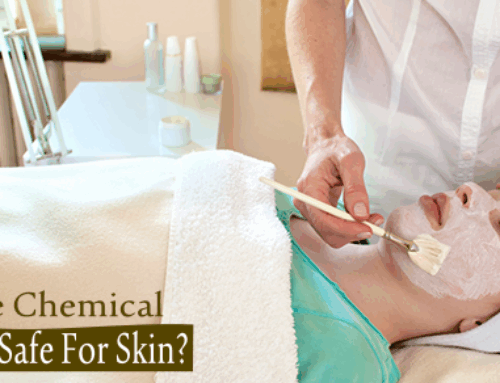How many units of botox treatment is normal?

Botox has transformed the field of aesthetic medicine, becoming one of the most popular cosmetic treatments worldwide. This purified protein solution, administered through precise injections, effectively reduces the appearance of wrinkles and fine lines by temporarily relaxing specific facial muscles.
The question “how many units of Botox do I need?” ranks among the most common concerns for both new and experienced patients. However, understanding that the answer isn’t one-size-fits-all is crucial. It’s a personalized decision based on several key factors:
- Your unique facial anatomy
- The strength of your muscles
- Your desired aesthetic outcomes
- The specific areas being treated
Understanding the right number of Botox units is crucial for achieving natural-looking results while maintaining facial expressiveness. Too few units might lead to underwhelming results, while too many could create an unnaturally frozen appearance.
This comprehensive guide will walk you through:
- Recommended unit ranges for different facial areas
- Individual factors that influence dosage requirements
- Professional guidelines for treatment frequency
- Expert insights on customizing your treatment plan
Whether you’re considering your first Botox treatment or seeking to optimize your current regimen, this information will help you make informed decisions about your aesthetic journey.
It’s interesting to note that Botox is not just limited to cosmetic procedures. It has also found its way into various medical fields, with some surprising uses that were not widely known before.
Moreover, if you’re concerned about potential side effects like injection marks, you might find it reassuring that Botox injections typically leave minimal marks.
As you embark on this journey towards enhancing your appearance, remember that professional guidance can be invaluable. If you have any questions or need further assistance regarding your Botox treatment or even clinical trials related to it, don’t hesitate to reach out for help.
Understanding Botox
Botox, scientifically known as Botulinum toxin type A, is a purified protein derived from the bacterium Clostridium botulinum. First discovered in the 1940s, this neurotoxin injection gained FDA approval for cosmetic use in 2002, marking a revolutionary advancement in aesthetic medicine.
How Botox Works
The science behind Botox lies in its ability to temporarily block nerve signals to specific muscles. When injected, it prevents the release of acetylcholine – a neurotransmitter responsible for muscle contractions. This mechanism creates a controlled relaxation of targeted facial muscles, reducing the appearance of dynamic wrinkles.
Primary Applications in Aesthetics
Botox is primarily used for the following cosmetic purposes:
- Smoothing forehead lines
- Softening frown lines between eyebrows
- Minimizing crow’s feet around eyes
- Reducing neck bands
- Reshaping jawline
Therapeutic Uses of Botox
In addition to its cosmetic applications, Botox also serves therapeutic purposes such as:
- Treatment of chronic migraines
- Management of excessive sweating
- Relief from muscle spasms
- Treatment of overactive bladder
The Injection Process
The injection process is precise and strategic, with practitioners carefully selecting specific points to achieve natural-looking results. For instance, Dr. Mani Raman, a respected authority in the field of cosmetic dermatology, employs advanced techniques to ensure optimal outcomes.
What to Expect After Treatment
The protein’s effects typically begin within 24-48 hours post-treatment, with full results visible after 7-14 days. At The Centre for Dermatology, we prioritize patient education and satisfaction throughout this process. We also offer a Brilliant Distinctions Program that rewards our loyal patients with free cosmetic treatments in the future.
Benefits of Botox Treatment
Botox treatments offer a wide range of benefits that extend beyond traditional cosmetic applications. The aesthetic advantages include:
1. Wrinkle Reduction and Prevention
- Smooths existing facial lines
- Prevents formation of new wrinkles
- Creates a refreshed appearance
2. Facial Contouring
- Lifts drooping eyebrows
- Slims jawline
- Reduces neck bands
- Balances facial asymmetry
These aesthetic enhancements can be complemented with other facial fillers for a more comprehensive makeover, addressing issues like dark circles or reshaping earlobes.
Beyond aesthetic enhancements, Botox serves as an effective medical treatment for:
- Chronic migraines
- Excessive sweating
- Muscle spasms
- TMJ disorders
- Overactive bladder
For instance, the treatment for excessive sweating (hyperhidrosis) is one of the body procedures that Botox can effectively address.
The FDA has approved Botox for both cosmetic and therapeutic uses, backed by extensive clinical research spanning three decades. Studies show a 95% satisfaction rate among patients receiving Botox treatments, with minimal side effects reported.
The safety profile of Botox remains strong, with millions of successful treatments performed annually worldwide. Clinical data demonstrates that adverse reactions occur in less than 1% of cases when administered by qualified professionals such as our dedicated team of Registered Nurses who offer a kind and caring hand to each and every patient.
Note: Results vary between individuals, and optimal outcomes depend on proper administration by certified practitioners.
Determining the Right Units for Treatment
The ideal Botox dosage varies significantly from person to person, influenced by several key anatomical factors:
1. Muscle Size and Strength
- Larger muscles require higher doses to achieve desired results
- Stronger facial muscles need additional units for effective treatment
- Individual muscle patterns affect distribution of units across treatment areas
2. Gender-Specific Requirements
- Men typically need 50% more units than women
- Male facial muscles are naturally larger and stronger
- Women often require 20-30 units for forehead treatment
- Men might need 30-40 units for the same area
3. Personal Factors Affecting Dosage
- Age and skin elasticity
- Previous Botox treatment history
- Facial symmetry and structure
- Depth of existing lines and wrinkles
4. Treatment Goals
- Subtle results require fewer units
- Dramatic changes need higher doses
- Prevention-focused treatments use lower amounts
- Therapeutic treatments for conditions like TMJ may need increased units
A thorough assessment by a qualified provider considers these individual characteristics to create a personalized treatment plan. The provider will evaluate muscle movement patterns during facial expressions to determine precise injection points and appropriate unit amounts.
It’s worth noting that Botox isn’t just limited to facial treatments. It can also be used in areas such as the hands, which are often the first place to show signs of aging. To address this, there are several methods available to rejuvenate your hands, including some that can be complemented with Botox treatments. For more on this topic, you might find the article on 7 ways to rejuvenate your hands helpful.
Recommended Units by Treatment Area
Each facial area requires specific Botox unit measurements for optimal results. Here’s a detailed breakdown of recommended units by treatment area:
Forehead Lines
- 10-30 units total
- Distributed across 5 injection sites
- Average of 4-6 units per site
- Treatment spans the horizontal lines across the forehead
Glabellar Lines (Between Eyebrows)
- Up to 25 units
- Administered across 5 strategic points
- Targets the “11” lines between brows
- Treats both vertical and horizontal creases
Crow’s Feet
- 5-15 units per side
- 3-4 injection points around each eye
- Careful placement to maintain natural expression
- May require adjustments based on wrinkle depth
Dark Under Eye Circles
For those struggling with dark under-eye circles, these can easily be corrected with hyaluronic acid fillers & laser that provide immediate improvement for up to 18 months with one session.
Facial Refinement Areas
- Chin: 2-6 units for dimpling
- Corners of mouth: 3-6 units to lift downturned edges
- Eyebrow lift: 2-5 units for subtle arch enhancement
- Results last 3-4 months on average
Larger Treatment Areas
- Jaw area (masseter muscles): 20-50 units per side
- Neck bands: 25-50 units total
- Multiple injection points required
- May need gradual adjustment over multiple sessions
These unit recommendations serve as standard guidelines. Your provider might adjust these amounts based on:
- Muscle strength
- Previous treatment response
- Desired outcome intensity
- Facial symmetry needs
- Individual aging patterns
A skilled practitioner will map out precise injection points during your consultation, marking specific locations for each unit to ensure balanced, natural-looking results.
In addition to Botox, other treatments such as BELA MD laser treatment can also be considered. This Cutera Laser treatment is a blessing for men and women alike, bringing back youthful, radiant skin by removing signs of premature aging and promoting skin elasticity.
Furthermore, if you’re interested in exploring other procedures or have any questions regarding the treatments, feel free to reach out through our contact page.
Average Treatment Overview
The standard Botox treatment typically involves approximately 20 units for addressing common aesthetic concerns. This baseline serves as a reference point, not a fixed rule. Each patient’s treatment plan requires careful customization based on their unique needs.
Key factors influencing standard dosage:
- Muscle strength and size
- Treatment area location
- Desired aesthetic outcome
- Previous treatment history
- Age and skin condition
A skilled practitioner evaluates these elements to determine the optimal number of units for each patient. Some individuals might achieve their desired results with fewer units, while others may require additional units for effective treatment.
Treatment variations by concern:
- Mild wrinkles: 10-15 units
- Moderate lines: 15-25 units
- Deep-set wrinkles: 25-35 units
The concept of an “average” treatment should be viewed as a starting point for discussion with your healthcare provider. Your practitioner will assess your facial anatomy, muscle movement patterns, and aesthetic goals to create a personalized treatment plan that may differ from these standard ranges.
First-time Botox patients often receive conservative doses, allowing for adjustments in subsequent sessions based on individual response to treatment. This approach ensures optimal results while maintaining natural facial expressions.
Maintenance Treatments and Consultation with Professionals
A successful Botox treatment journey requires strategic planning and professional guidance. The effects of Botox typically last between 3-4 months, making this the standard interval for maintenance treatments. Your body gradually metabolizes the neurotoxin during this period, leading to the gradual return of muscle movement in treated areas.
Key Factors Affecting Treatment Frequency:
- Individual metabolism rates
- Treatment areas
- Muscle strength
- Lifestyle factors (exercise, sun exposure, smoking)
- Previous treatment response
Regular consultations with board-certified professionals create opportunities to:
- Track treatment effectiveness
- Adjust unit quantities
- Document progress
- Address emerging concerns
- Fine-tune treatment plans
These professionals can also provide cosmetic treatments that help you look your best for special events in your life.
Professional Assessment Components:
- Medical History Review
- Previous treatments
- Current medications
- Health conditions
- Allergies
- Physical Examination
- Facial muscle assessment
- Dynamic wrinkle patterns
- Skin quality evaluation
- Asymmetry identification
- Treatment Planning
- Unit calculations
- Injection site mapping
- Cost estimates
- Timeline development
Board-certified dermatologists and plastic surgeons possess specialized knowledge of facial anatomy, ensuring precise injection placement and optimal results. These professionals stay current with advanced techniques, safety protocols, and FDA guidelines.
Your provider should maintain detailed records of your treatments, including:
- Units administered per area
- Treatment dates
- Results achieved
- Side effects experienced
- Photos documenting progress
This documentation helps create personalized treatment protocols and ensures consistent results across multiple sessions. Professional oversight minimizes risks and complications while maximizing the benefits of your Botox treatments.
In addition to Botox, there are various conditions and treatments available that can make you look fresher and younger. For instance, if you’re looking for a more youthful appeal without surgery, non-surgical facelift procedures using soft tissue fillers could be an excellent option.
Furthermore, if you’re struggling with saggy skin or fine lines, Sciton Laser anti-aging treatments offered at The Centre for Dermatology could provide the solution you need.
Choosing the Right Provider for Your Botox Treatment
Selecting a qualified practitioner for your Botox treatment directly impacts your safety and results. Here’s what to look for in a provider:
Essential Credentials
- Board certification in dermatology, plastic surgery, or facial plastic surgery
- Valid medical license in your state
- Extensive experience with Botox injections
- Professional membership in recognized medical societies
Key Questions for Your Provider
- How many Botox procedures do you perform monthly?
- Can you share before-and-after photos of previous patients?
- What complications have you encountered and how did you handle them?
- Do you perform the injections yourself or delegate to staff?
- What’s your approach to addressing unsatisfactory results?
Red Flags to Watch For
- Unusually low prices or “too good to be true” deals
- Reluctance to show credentials or answer questions
- Pressure to commit without proper consultation
- Non-medical setting for injections
- Limited or no information about potential risks
A reputable provider maintains a clean, professional medical facility and prioritizes patient education. They should offer a thorough consultation, discuss your goals, and create a customized treatment plan. Check online reviews, but remember to verify credentials through official medical board websites.
Making an Informed Decision About Your Botox Treatment
The right number of Botox units varies significantly from person to person. Your unique facial structure, muscle strength, and aesthetic goals play crucial roles in determining the appropriate dosage. A consultation with a qualified medical professional ensures you receive a treatment plan tailored to your specific needs.
Ready to start your Botox journey? Schedule a consultation with a board-certified dermatologist or plastic surgeon to:
- Discuss your aesthetic goals
- Receive a personalized treatment plan
- Learn about proper unit dosages for your needs
- Understand maintenance requirements
Frequently Asked Questions About Botox Treatment
What are the common side effects?
- Temporary bruising at injection sites
- Mild swelling or redness
- Slight discomfort during treatment
- Rare cases of eyelid drooping
- Headache (usually resolves within 24-48 hours)
How long do Botox results typically last?
- First-time treatments: 3-4 months
- Regular maintenance treatments may extend results
- Results vary based on:
- Individual metabolism
- Treatment area
- Number of units used
- Muscle strength
Is there downtime after treatment?
- Minimal to no downtime required
- Most patients return to normal activities immediately
- Recommended precautions for 24 hours:
- Avoid strenuous exercise
- Stay upright for 4 hours
- Don’t massage treated areas
- Skip facial treatments
What affects the number of units needed?
- Facial muscle strength
- Treatment area size
- Gender (men typically need more units)
- Previous Botox history
- Desired results
Book a Consultation with our board-certified specialists at The Centre for Dermatology to discuss your Botox treatment options and explore these additional procedures.
Remember: The information provided serves as a general guide. Your actual treatment plan may differ based on individual factors and professional assessment.







